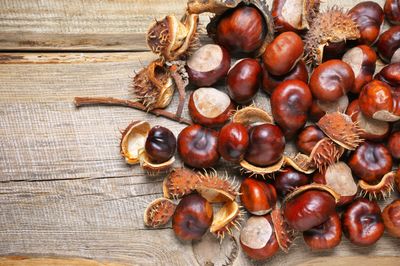About Toxic Horse Chestnuts
You’ll find horse chestnut trees growing across the U.S., but they originally come from Europe’s Balkan region. Brought to this country by the colonists, the trees are widely grown in America as attractive shade trees, growing to 50 feet (15 m.) tall and wide. The palmate leaves of the horse chestnuts are also attractive. They have five or seven green leaflets united in the center. The trees produce lovely white or pink spike flowers up to a foot (30.5 cm.) long that grow in clusters. These blossoms, in turn, produce spiny nutshells containing smooth, shiny seeds. They are termed horse chestnuts, buckeyes, or conkers. They resemble edible chestnuts but are, in fact, TOXIC. The horse chestnut’s fruit is a spiny green capsule 2 to 3 inches (5-7.5 cm.) in diameter. Each capsule contains two horse chestnuts or conkers. The nuts appear in autumn and fall to the ground as they ripen. They often display a whitish scar at the base.
Can You Eat Horse Chestnuts?
No, you cannot consume these nuts safely. Toxic horse chestnuts cause serious gastrointestinal problems if consumed by humans. Are horse chestnuts poisonous to animals as well? They are. Cattle, horses, sheep, and chickens have been poisoned by eating poisonous conkers or even the young shoots and foliage of the trees. Even honeybees can be killed by feeding on horse chestnut nectar and sap. Consuming the nuts or leaves of horse chestnut trees causes bad colic in horses and other animals develop vomiting and abdominal pain. However, deer seem to be able to eat poisonous conkers without ill effect.
Uses for Horse Chestnuts
While you cannot safely eat horse chestnuts or feed them to livestock, they have medicinal uses. Extract from the poisonous conkers contains aescin. This is used to treat hemorrhoids and chronic venous insufficiency. In addition, over history conkers have been used to keep spiders away. However, there is some debate about whether or not the horse chestnuts actually repel the arachnids or simply appear at the same time spiders disappear in winter.
